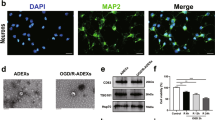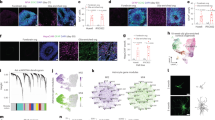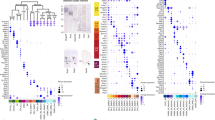Abstract
Glial scar formation resulted from excessive astrogliosis limits axonal regeneration and impairs recovery of function, thus an intervention to ameliorate excessive astrogliosis is crucial for the recovery of neurological function after cerebral ischemia. In this study we investigated the effects of carnosine, an endogenous water-soluble dipeptide (β-alanyl-L-histidine), on astrogliosis of cells exposed to oxygen-glucose deprivation/recovery (OGD/R) in vitro. Primary cultured rat astrocytes exhibited a significant increase in proliferation at 24 h recovery after OGD for 2 h. Pretreatment with carnosine (5 mmol/L) caused G1 arrest of reactive astrocytes, significantly attenuated OGD/R-induced increase in cyclin D1 protein expression and suppressed OGD/R-induced proliferation of reactive astrocytes. Carnosine treatment also reversed glycolysis and ATP production, which was elevated at 24 h recovery after OGD. A marked increase in migration of reactive astrocytes was observed at 24 h after OGD, whereas carnosine treatment reversed the expression levels of MMP-9 and suppressed the migration of astrocytes. Furthermore, carnosine also improved neurite growth of cortical neurons co-cultured with astrocytes under ischemic conditions. These results demonstrate that carnosine may be a promising candidate for inhibiting astrogliosis and promoting neurological function recovery after ischemic stroke.
Similar content being viewed by others
Log in or create a free account to read this content
Gain free access to this article, as well as selected content from this journal and more on nature.com
or
References
Huang L, Wu ZB, Zhuge Q, Zheng W, Shao B, Wang B, et al. Glial scar formation occurs in the human brain after ischemic stroke. Int J Med Sci 2014; 11: 344–8.
Cregg JM, DePaul MA, Filous AR, Lang BT, Tran A, Silver J . Functional regeneration beyond the glial scar. Exp Neurol 2014; 253: 197–207.
Yiu G, He Z . Glial inhibition of CNS axon regeneration. Nat Rev Neurosci 2006; 7: 617–27.
Raposo C, Schwartz M . Glial scar and immune cell involvement in tissue remodeling and repair following acute CNS injuries. Glia 2014; 62: 1895–904.
Tan AM, Zhang W, Levine JM . NG2: a component of the glial scar that inhibits axon growth. J Anat 2005; 207: 717–25.
Silver J, Miller JH . Regeneration beyond the glial scar. Nat Rev Neurosci 2004; 5: 146–56.
Rolls A, Shechter R, Schwartz M . The bright side of the glial scar in CNS repair. Nat Rev Neurosci 2009; 10: 235–41.
Choudhury GR, Ding S . Reactive astrocytes and therapeutic potential in focal ischemic stroke. Neurobiol Dis 2016; 85: 234–44.
Boldyrev AA . Carnosine: new concept for the function of an old molecule. Biochemistry (Mosc) 2012; 77: 313–26.
Kamal MA, Jiang H, Hu Y, Keep RF, Smith DE . Influence of genetic knockout of Pept2 on the in vivo disposition of endogenous and exogenous carnosine in wild-type and Pept2 null mice. Am J Physiol Regul Integr Comp Physiol 2009; 296: R986–91.
Rajanikant GK, Zemke D, Senut MC, Frenkel MB, Chen AF, Gupta R, et al. Carnosine is neuroprotective against permanent focal cerebral ischemia in mice. Stroke 2007; 38: 3023–31.
Gleichman AJ, Carmichael ST . Astrocytic therapies for neuronal repair in stroke. Neurosci Lett 2014; 565: 47–52.
Shen Y, Yang J, Li J, Shi X, Ouyang L, Tian Y, et al. Carnosine inhibits the proliferation of human gastric cancer SGC-7901 cells through both of the mitochondrial respiration and glycolysis pathways. PLoS One 2014; 9: e104632.
Pekcetin C, Kiray M, Ergur BU, Tugyan K, Bagriyanik HA, Erbil G, et al. Carnosine attenuates oxidative stress and apoptosis in transient cerebral ischemia in rats. Acta Biol Hung 2009; 60: 137–48.
Shen Y, Zhang S, Fu L, Hu W, Chen Z . Carnosine attenuates mast cell degranulation and histamine release induced by oxygen-glucose deprivation. Cell Biochem Funct 2008; 26: 334–8.
Hipkiss AR, Cartwright SP, Bromley C, Gross SR, Bill RM . Carnosine: can understanding its actions on energy metabolism and protein homeostasis inform its therapeutic potential? Chem Cent J 2013; 7: 38.
Hipkiss AR . Energy metabolism, proteotoxic stress and age-related dysfunction - protection by carnosine. Mol Aspects Med 2011; 32: 267–78.
Shen Y, Tian Y, Yang J, Shi X, Ouyang L, Gao J, et al. Dual effects of carnosine on energy metabolism of cultured cortical astrocytes under normal and ischemic conditions. Regul Pept 2014; 192-193: 45–52.
Shen Y, Tian Y, Shi X, Yang J, Ouyang L, Gao J, et al. Exposure to high glutamate concentration activates aerobic glycolysis but inhibits ATP-linked respiration in cultured cortical astrocytes. Cell Biochem Funct 2014; 32: 530–7.
Beazley KE, Zhang T, Lima F, Pozharskaya T, Niger C, Tzitzikov E, et al. Implication for transglutaminase 2-mediated activation of beta-catenin signaling in neointimal vascular smooth muscle cells in chronic cardiac allograft rejection. J Heart Lung Transplant 2012; 31: 1009–17.
Shen Y, He P, Fan YY, Zhang JX, Yan HJ, Hu WW, et al. Carnosine protects against permanent cerebral ischemia in histidine decarboxylase knockout mice by reducing glutamate excitotoxicity. Free Radic Biol Med 2010; 48: 727–35.
Boato F, Rosenberger K, Nelissen S, Geboes L, Peters EM, Nitsch R, et al. Absence of IL-1beta positively affects neurological outcome, lesion development and axonal plasticity after spinal cord injury. J Neuroinflammation 2013; 10: 6.
Di Giovanni S, Movsesyan V, Ahmed F, Cernak I, Schinelli S, Stoica B, et al. Cell cycle inhibition provides neuroprotection and reduces glial proliferation and scar formation after traumatic brain injury. Proc Natl Acad Sci U S A 2005; 102: 8333–8.
Copin JC, Gasche Y . Matrix metalloproteinase-9 deficiency has no effect on glial scar formation after transient focal cerebral ischemia in mouse. Brain Res 2007; 1150: 167–73.
Sofroniew MV . Molecular dissection of reactive astrogliosis and glial scar formation. Trends Neurosci 2009; 32: 638–47.
Hipkiss AR, Gaunitz F . Inhibition of tumour cell growth by carnosine: some possible mechanisms. Amino Acids 2014; 46: 327–37.
Holliday R, McFarland GA . Inhibition of the growth of transformed and neoplastic cells by the dipeptide carnosine. Br J Cancer 1996; 73: 966–71.
Iovine B, Iannella ML, Nocella F, Pricolo MR, Bevilacqua MA . Carnosine inhibits KRAS-mediated HCT116 proliferation by affecting ATP and ROS production. Cancer Lett 2012; 315: 122–8.
Cartwright SP, Bill RM, Hipkiss AR . L-carnosine affects the growth of Saccharomyces cerevisiae in a metabolism-dependent manner. PLoS One 2012; 7: e45006.
Li CY, Li X, Liu SF, Qu WS, Wang W, Tian DS . Inhibition of mTOR pathway restrains astrocyte proliferation, migration and production of inflammatory mediators after oxygen-glucose deprivation and reoxygenation. Neurochem Int 2015; 83–84: 9–18.
Liu T, Xue CC, Shi YL, Bai XJ, Li ZF, Yi CL . Overexpression of mitofusin 2 inhibits reactive astrogliosis proliferation in vitro. Neurosci Lett 2014; 579: 24–9.
Hsieh HL, Yang SH, Lee TH, Fang JY, Lin CF . Evaluation of anti-inflammatory effects of helminthostachys zeylanica extracts via inhibiting bradykinin-induced MMP-9 expression in brain astrocytes. Mol Neurobiol 2016; 53: 5995–6005.
Chuang CH, Hu ML . L-carnosine inhibits metastasis of SK-Hep-1 cells by inhibition of matrix metaoproteinase-9 expression and induction of an antimetastatic gene, nm23-H1. Nutr Cancer 2008; 60: 526–33.
Wanner IB, Deik A, Torres M, Rosendahl A, Neary JT, Lemmon VP, et al. A new in vitro model of the glial scar inhibits axon growth. Glia 2008; 56: 1691–709.
Lee JK, Kim JE, Sivula M, Strittmatter SM . Nogo receptor antagonism promotes stroke recovery by enhancing axonal plasticity. J Neurosci 2004; 24: 6209–17.
Wang R, Zhang X, Zhang J, Fan Y, Shen Y, Hu W, et al. Oxygen-glucose deprivation induced glial scar-like change in astrocytes. PLoS One 2012; 7: e37574.
Acknowledgements
This work was supported by the National Natural Science Foundation of China (81571289).
Author information
Authors and Affiliations
Corresponding author
Rights and permissions
About this article
Cite this article
Ou-yang, L., Liu, Y., Wang, By. et al. Carnosine suppresses oxygen-glucose deprivation/recovery-induced proliferation and migration of reactive astrocytes of rats in vitro. Acta Pharmacol Sin 39, 24–34 (2018). https://doi.org/10.1038/aps.2017.126
Received:
Accepted:
Published:
Issue date:
DOI: https://doi.org/10.1038/aps.2017.126
Keywords
This article is cited by
-
LOX-1 mediates inflammatory activation of microglial cells through the p38-MAPK/NF-κB pathways under hypoxic-ischemic conditions
Cell Communication and Signaling (2023)
-
Neuroprotective Potential of Carnosine in Cerebrovascular Diseases
International Journal of Peptide Research and Therapeutics (2022)
-
Cinnamaldehyde protects against rat intestinal ischemia/reperfusion injuries by synergistic inhibition of NF-κB and p53
Acta Pharmacologica Sinica (2020)
-
The glucagon-like peptide-1 receptor agonist reduces inflammation and blood-brain barrier breakdown in an astrocyte-dependent manner in experimental stroke
Journal of Neuroinflammation (2019)
-
TRPV1 translocated to astrocytic membrane to promote migration and inflammatory infiltration thus promotes epilepsy after hypoxic ischemia in immature brain
Journal of Neuroinflammation (2019)



